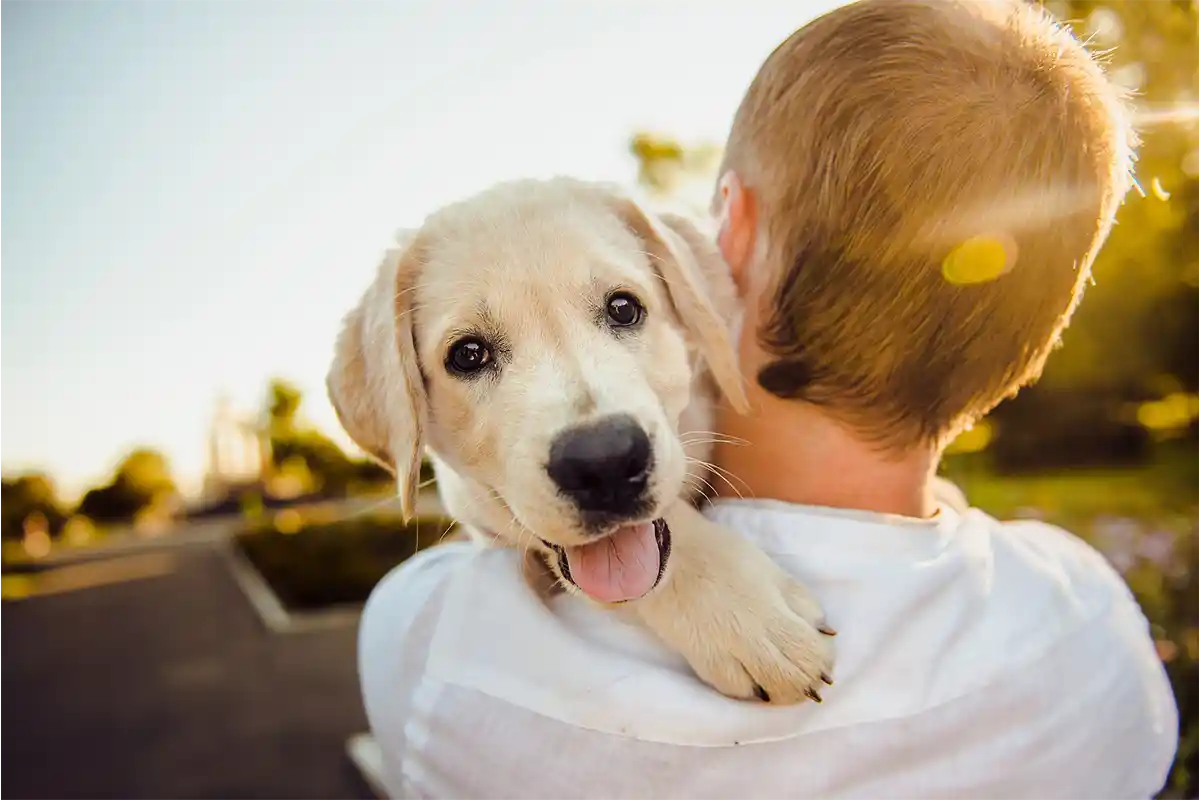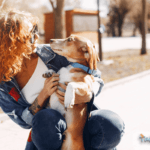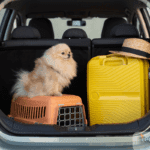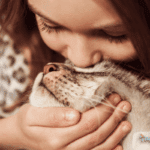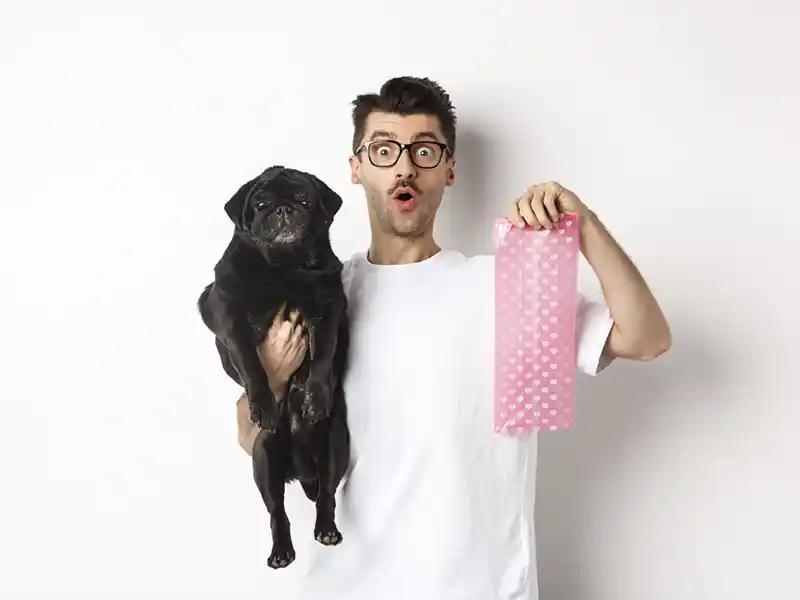How to make your dog happy
Every dog owner knows the joy of seeing their furry friend wagging their tail with excitement. Dogs thrive on love, attention, and enrichment, but maintaining their happiness can sometimes feel overwhelming. Many pet owners struggle with understanding their dog’s needs, leading to stress or behavioral challenges.
The good news? Ensuring your dog’s happiness doesn’t have to be complicated. In this guide, we’ll walk you through nine simple, practical tips to make your dog’s tail wag with joy. From mental stimulation to quality bonding time, these strategies are designed to enhance your pup’s well-being and strengthen your bond.
Let’s get started on your journey to becoming your dog’s favorite human! 🐾
1. Create a Daily Routine
Dogs thrive on consistency—it gives them a sense of security and helps them navigate their day with confidence. A predictable routine can reduce anxiety, improve behavior, and build trust between you and your furry companion.
Why a Routine Matters for Your Dog
Creating a daily routine ensures your dog knows what to expect. Consistent mealtimes, walks, and play sessions reduce stress and help your dog feel more in tune with their environment.
How to Build a Dog-Friendly Routine
- Start the Morning Right: Begin the day with a short walk or play session. This helps burn off energy and sets a positive tone for the day.
- Mealtime Consistency: Feed your dog at the same time every morning and evening. Consistent meals not only aid digestion but also establish a sense of order.
- Daily Walks and Exercise: A midday or evening walk gives your pup the exercise they need while also providing mental stimulation from new sights and smells.
- Evening Bonding: Dedicate time for relaxation—whether it’s cuddling on the couch or gentle grooming to wind down.
Dogs thrive on predictability. Establishing a routine helps reduce anxiety and fosters a stronger bond between pet and owner,” says Dr. Esther Knoetze, BSc, BVSc.
Check out Understanding Separation Anxiety in Dogs to see how routines can help alleviate stress and anxiety in your pet.
2. Provide Mental Stimulation with Interactive Dog Toys
Keeping your dog’s mind active is just as important as physical exercise. Without mental enrichment, dogs can become bored, anxious, or even destructive.
Why Mental Stimulation Is Essential
Engaging your dog’s brain helps curb boredom and reduce anxiety. It also prevents destructive behaviors like chewing or digging, especially in intelligent breeds.
Interactive Ideas to Keep Your Dog Engaged
- Puzzle Toys: Toys like treat-dispensing puzzles challenge your dog to think and problem-solve. They’re perfect for keeping them occupied while you’re away.
- Scent Games: Hide treats around your home or yard and let your dog’s nose do the work. This taps into their natural instincts and provides hours of fun.
- Training Sessions: Teaching new tricks or reinforcing old ones isn’t just rewarding—it strengthens your bond and boosts their confidence.
Mental stimulation is crucial for a dog’s well-being. Activities like scent games and puzzle toys not only reduce boredom but also encourage problem-solving skills,” explains Dr. Esther Knoetze, BSc, BVSc.
Learn about safe environments for dogs in our article Toxic Plants for Dogs: A Comprehensive Vet-Approved Reference Guide.
3. Ensure Adequate Physical Exercise Tailored to Your Dog’s Breed
Every dog, regardless of size or age, needs regular physical exercise to stay healthy and happy. But not all exercise routines are created equal—your dog’s breed, age, and energy levels should guide the activities you choose.
Matching Exercise to Your Dog’s Needs
- High-Energy Breeds: Dogs like Border Collies and Labrador Retrievers thrive on activities like running, hiking, or agility training.
- Small Breeds: Short walks and indoor play are often sufficient for breeds like Chihuahuas or Shih Tzus.
- Senior Dogs: Gentle strolls and low-impact exercises keep older dogs active without putting strain on their joints.
Ideas for Fun and Effective Exercise
- Play a game of fetch in your backyard or local park.
- Try agility courses for a fun, challenging workout.
- Take your dog swimming for a low-impact exercise that’s perfect for joint health.
Exercise tailored to a dog’s breed and age prevents overexertion and keeps them physically and mentally fit,” shares Dr. Esther Knoetze, BSc, BVSc.
Learn about the unique needs of Golden Retrievers in our Golden Retriever Breed Guide.
4. Encourage Socialization with Other Dogs and People
Socialization is a cornerstone of a happy and well-behaved dog. Regular interaction with other dogs and people helps your pet build confidence, reduce fear, and develop healthy behavior patterns.
Why Socialization Matters
Socialization isn’t just about playdates—it’s about teaching your dog how to interact positively with their environment. A well-socialized dog is less likely to display aggressive or fearful behaviors and is more adaptable to new situations.
Early exposure to a variety of environments, people, and dogs is key to raising a well-adjusted pet,” says Dr. Esther Knoetze, BSc, BVSc.
Safe Socialization Tips for Dogs
- Organize Playdates: Introduce your dog to friendly, vaccinated dogs in a controlled setting. Keep initial meetings short and positive.
- Visit Dog Parks: Allow your dog to meet others off-leash in designated dog parks. Supervise interactions to ensure they remain friendly.
- Enroll in Training Classes: Group classes are an excellent way for dogs to interact while learning obedience skills.
- Expose Them to New Environments: Take your dog to busy areas like pet-friendly cafes or markets to acclimate them to different sounds, sights, and smells.
Learn more about fostering harmony between pets in our article How to Help Your Dog and Cat Coexist.
5. Spend Quality Time to Strengthen Your Bond with Your Dog
Dogs are social creatures who thrive on attention and companionship. Spending quality time with your dog strengthens the bond you share and enhances their overall happiness.
Why Quality Time Matters
Spending time with your dog shows them they’re valued, fostering trust and reducing feelings of neglect. A close bond also improves communication, making training and daily interactions smoother.
“Spending quality time reduces anxiety and builds mutual trust, improving your dog’s overall well-being,” explains Dr. Esther Knoetze, BSc, BVSc.
Fun Activities to Deepen Your Bond
- Training Sessions: Use positive reinforcement to teach new commands or tricks. Training mentally stimulates your dog and boosts their confidence.
- Go on Adventures Together: Explore new walking trails, parks, or dog-friendly beaches.
- Cuddle Time: Many dogs love snuggling with their owners. Set aside time for relaxation and affection.
- Interactive Games: Play games like tug-of-war or hide-and-seek to keep your dog engaged.
Understand the importance of recognizing behaviors in your dog by reading Why Does Your Dog’s Tongue Stick Out?.
6. Offer Healthy and Nutritious Treats
Treats are an excellent way to reward your dog, but it’s essential to prioritize their nutritional value. The right treats can support your dog’s health while making them feel loved.
Choosing the Right Treats
- Vet-Approved Options: Opt for treats made with natural, high-quality ingredients. Avoid products with excessive sugar, salt, or artificial additives.
- Tailored to Your Dog’s Needs: Choose treats suited to your dog’s size, age, and dietary requirements.
“While treats are an excellent way to reward good behavior, they should always complement a balanced diet,” advises Dr. Esther Knoetze, BSc, BVSc.
DIY Dog Treat Ideas for Healthier Rewards
- Peanut Butter Biscuits: Use unsalted, xylitol-free peanut butter for a delicious, dog-safe treat.
- Pumpkin Delights: Combine canned pumpkin with oat flour for a fiber-rich snack.
- Chicken Jerky: Thinly slice chicken breast, bake until fully dried, and let cool.
Learn how regular vet check-ups can guide treat choices in Why Regular Checkups Are Important to Your Pet’s Health. Not sure when to transition your puppy to adult food? Read more on Transitioning Your Puppy to Adult Dog Food: Vet-Approved Tips.
7. Create a Comfortable and Safe Home Environment
Your dog’s happiness starts at home. A comfortable and safe environment helps them feel secure and relaxed, reducing stress and enhancing their quality of life.
Why a Calming Environment Is Important
A safe, stress-free home serves as your dog’s sanctuary. It provides them with a sense of security and a space to decompress after stimulating activities.
A quiet, hazard-free space helps dogs decompress, especially after stimulating activities,” says Dr. Esther Knoetze, BSc, BVSc.
Essential Safety Tips for Dog Owners
- Designate a Relaxation Space: Set up a cozy corner with a comfortable bed, blankets, and toys.
- Minimize Hazards: Keep toxic plants, chemicals, and small objects out of reach.
- Maintain a Calm Atmosphere: Reduce loud noises and sudden disruptions to keep your dog calm.
Protect your home by reading Toxic Plants for Dogs: A Comprehensive Vet-Approved Reference Guide.
8. Rotate Toys and Introduce New Ones Regularly
Dogs, much like humans, can get bored with the same activities and toys over time. Rotating their toys and introducing new ones periodically keeps them mentally engaged and excited.
Why Rotating Toys Is Important
Toys provide both mental stimulation and an outlet for your dog’s natural instincts, like chewing or chasing. Regularly changing toys prevents boredom, reduces destructive behaviors, and keeps playtime fun.
Rotating toys not only prevents boredom but also supports cognitive development by introducing new challenges,” notes Dr. Esther Knoetze, BSc, BVSc.
The Science Behind Rotating Dog Toys
Dogs have a natural curiosity that thrives on novelty. Reintroducing toys after a break makes them seem new and exciting, rekindling your dog’s interest and encouraging healthy play behaviors.
How to Rotate Toys Effectively
- Group Toys: Divide your dog’s toys into different sets and alternate them weekly.
- Introduce Novelty: Occasionally add new toys to the mix to maintain your dog’s interest.
- Incorporate Interactive Options: Include puzzle feeders, treat-dispensing toys, or toys with unique textures for added excitement.
- DIY Ideas: Repurpose household items like cardboard boxes for hide-and-seek games or use frozen treats inside rubber toys for a refreshing challenge.
Discover our recommendations for interactive toys in How to Bathe a Dog: Expert Tips for Stress-Free Grooming.
9. Schedule Regular Veterinary Check-Ups
A cornerstone of your dog’s happiness is good health. Regular veterinary check-ups ensure that potential health issues are caught early, allowing your dog to stay active and happy.
Why Regular Vet Visits Are Crucial
Routine check-ups are not just about vaccinations—they’re an opportunity to assess your dog’s overall health, including dental care, weight management, and early detection of illnesses.
Preventive care is the best way to ensure a long and happy life for your dog. Regular vet visits allow us to catch and address issues before they become serious,” emphasizes Dr. Esther Knoetze, BSc, BVSc.
Common Issues Caught During Routine Vet Visits
- Dental disease, which can lead to pain and eating difficulties.
- Early signs of arthritis or joint issues in aging dogs.
- Weight management problems that could lead to obesity-related conditions.
Tips for Stress-Free Vet Visits
- Acclimate Your Dog: Familiarize your dog with car rides and handling to reduce stress during vet visits.
- Bring Comfort Items: A favorite toy or blanket can help your dog feel more at ease.
- Practice Positive Reinforcement: Reward your dog with treats and praise after the visit to associate the vet with positive experiences.
Learn to recognize health warning signs in 11 Warning Signs You Should Take Your Dog to the Vet.
FAQ: Frequently Asked Questions
1. What are the signs of a happy dog?
+A happy dog typically has a wagging tail, relaxed body posture, and a playful attitude. They also show a good appetite and seek your attention through positive behaviors.
🩺 Veterinary Insight:
“A wagging tail and relaxed demeanor often reflect a dog’s emotional well-being,” explains Dr. Esther Knoetze, BSc, BVSc.
2. What are the quickest ways to make my dog happy?
+Engage your dog with quick activities like a game of fetch, a short walk, or offering a new toy. Even small moments of quality time or a healthy treat can brighten their day.
3. How often should I rotate my dog’s toys?
+Rotate your dog’s toys every 1-2 weeks to keep them fresh and exciting. Adding new interactive or puzzle toys occasionally can help maintain your dog’s interest.
🩺 Veterinary Insight:
“Frequent toy rotation prevents boredom and stimulates curiosity, keeping dogs mentally engaged,” advises Dr. Esther Knoetze, BSc, BVSc.
4. How often should my dog visit the vet?
+Adult dogs should have a vet check-up annually, while puppies and senior dogs may need more frequent visits for vaccinations and preventive care. Routine check-ups ensure early detection of health issues.
5. What are the best vet-approved treats for my dog?
+Choose natural, healthy treats tailored to your dog’s size, age, and dietary needs. Examples include peanut butter biscuits (xylitol-free), pumpkin snacks, or plain chicken jerky.
🩺 Veterinary Insight:
“Treats can be both delicious and nutritious when chosen wisely,” shares Dr. Esther Knoetze, BSc, BVSc.
Conclusion
Happiness isn’t just about wagging tails—it’s about creating a life filled with love, enrichment, and care for your furry friend. By incorporating these nine simple tips, you can enhance your dog’s quality of life and strengthen the bond you share.
From establishing daily routines to regular vet visits, every action you take shows your dog how much they mean to you. Remember, a happy dog is a healthy, well-loved dog.
Your dog’s wagging tail is more than a sign of joy—it’s a reflection of the love and care you give them,” shares Dr. Esther Knoetze, BSc, BVSc.
Tell us your favorite way to make your dog happy! Share it in the comments or tag us on social media with #TailwaggorsHappyDogs to inspire other pet lovers. We’d love to hear from you! Contact Tailwaggors
Meet the happy dog—a loyal, tail-wagging companion full of love and joy!
🐾✨ Discover expert tips to boost their happiness, enhance bonding, and keep them healthy in this essential guide.
Share with your fellow dog lovers and see how they make their furry friends smile 🐶❤️


